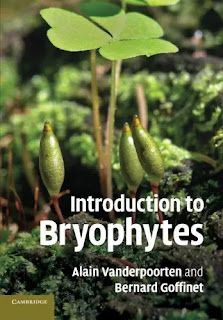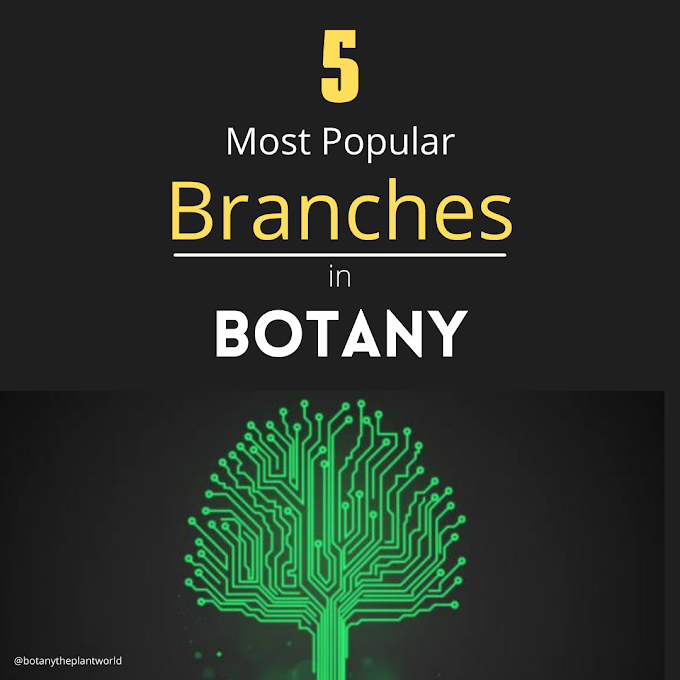10 Botany Books You Must Read in Your BSc and MSc Programs - [Times of Botany]
Botany is the scientific study of plants. The one of the vast subject in around the world. There are several branches included in botany like, Phycology, Mycology,Plant Pathology, Microbiology and Taxonomy etc. Students, 10 Botany Books You Must Read in Your BSc and MSc Programs. That books are alphabets of Botany.
10 Botany Books You Must Read in Your BSc and MSc Programs - [Times of Botany]
Table of contents
Introduction
"Botany is the scientific study of plants. " [¹] when you start learning about botany. You choose some basic books for Botany. This books are helps to you a clear view about Botany. In this article I'm suggesting 10 botany books you must read in your BSc and MSc Programs. You can download PDF copy of these (Botany) books.
10 Botany Books You Must Read in Your BSc and MSc Programs - [Times of Botany]
1. Studies in Botany - J.N Mitra, D. Mitra and S.k Chaudhuri

Download
Studies in Botany is one of the most popular book in india. The majority of students must read this book in their academics. The language of this book is very simple. 
2.History of Botanical Science : An Account of the Development of Botany from Ancient Times to the Present Day - A. Morton

Download

3. Phycology 4th edition - Robert Edward Lee
 |
| Download |
4. Introduction to fungi 3rd edition - Webster & Weber
 |
| Download |
"Fungi can be single celled or very complex multicellular organisms. They are found in just about any habitat but most live on the land, mainly in soil or on plant material rather than in sea or fresh water."[⁴] The scientific study of fungi is called Mycology. There are 144,000 known species of organisms of the kingdom Fungi, which includes the yeast,rusts,smuts, mildews, molds and mushrooms. [⁵] . Importance of fungi is very simply defined by Webster & Weber.
5. Plant pathology concept of laboratory exercises 3rd edition - Ownley & Trigiano
 |
| Download |
The science of plant diseases is called plant pathology, or phytopathology. There are a wide variety of microorganisms such as fungi, bacteria, viruses and nematodes that cause these diseases. Diseases caused by these pathogens are often called biotic diseases. Also, environmental conditions, such as winter damage or drought stress, can cause disease in plants. Diseases caused by these factors are often called abiotic diseases. [⁶]
6. Prescott, Harley and Klein's Microbiology 7th edition
 |
| Download |
Microbiology is the study of the biology of microscopic organisms - viruses, bacteria, algae, fungi, slime molds, and protozoa. The methods used to study and manipulate these minute and mostly unicellular organisms differ from those used in most other biological investigations. Recombinant DNA technology uses microorganisms, particularly bacteria and viruses, to amplify DNA sequences and generate the encoded products. Moving genes from one microorganism to another, or amplifying them within microorganisms, permits application of microbial skills to solve medical and environmental problems. Many microorganisms are unique among living things in their ability to use gaseous nitrogen from the air for their nutritional requirements, or to degrade complex macromolecules in such materials as wood. By rearranging the genes that control these and other processes, scientists seek to engineer microorganisms that will process wastes, fertilize agricultural land, produce desirable biomolecules, and solve other problems inexpensively and safely. [⁷] This book is one of the best book for microbiology.
7.Introduction to Bryophytes - Vanderpoorten & Goffinet
 |
| Download |
The word bryophyte is the collective term for mosses, hornworts and liverworts and bryology is the study of bryophytes. While there are marked differences between these three groups of organisms, they are related closely enough to warrant a single term that includes all three. So a moss is a bryophyte, a liverwort is a bryophyte and a hornwort is a bryophyte.[8]
8.Plant Systematics: An Integrated Approach, Third Edition- by Gurcharan Singh
 |
| Download |
Taxonomy and systematics are two concepts related to the study of diversification of living forms and the relationships of living things through time. The main difference between taxonomy and systematics is that taxonomy is involved in the classification and naming of organisms whereas systematics is involved in the determination of evolutionary relationships of organisms. This means systematics ascertain the sharing of the common ancestry by different organisms. In taxonomy, different organisms are scientifically named and grouped in different taxonomic levels. Organisms are grouped based on their evolutionary relationships. Taxonomy can be considered as a branch of systematics. Both taxonomy and systematics use morphological, behavioral, genetics, and the biochemical observations. [9]
9. Lehninger Principles of Biochemistry 6th edition - David L. Nelson and Michael M. Cox
 |
| Download |
Biochemistry is the branch of science that explores the chemical processes within and related to living organisms. It is a laboratory based science that brings together biology and chemistry. By using chemical knowledge and techniques, biochemists can understand and solve biological problems. [10]
10. Introduction to plant physiology 4th edition- William G. Hopkins & Norman P. A. Huner
 |
| Download |
Plant physiology is a subdiscipline of botany concerned with the functioning, or physiology, of plants.[1] Closely related fields include plant morphology (structure of plants), plant ecology (interactions with the environment), phytochemistry (biochemistry of plants), cell biology, genetics, biophysics and molecular biology.[¹¹]
Conclusion:-
I hope this article is helpful for understanding Botany.


![10 Botany Books You Must Read in Your BSc and MSc Programs - [Times of Botany] 10 Botany Books You Must Read in Your BSc and MSc Programs - [Times of Botany]](https://blogger.googleusercontent.com/img/b/R29vZ2xl/AVvXsEhjKcAsry44klcHbEbH4coS8_7sirj_OSFTfzY3rAf31rc338SnEpfkwc7pFZE096n6Vou2LxHdhwpP1Ozz234PtdyeXDkaCOQ_qCeIR2Muo5-DZFVzNdTGoa7vZ5G-RXxqWITAC08MqD0/s16000/IMG_20210821_011855.jpg)
![Studies in Botany Vol. 1 [PDF] free download](https://blogger.googleusercontent.com/img/b/R29vZ2xl/AVvXsEh9d_VnmZL-v-FFbJXWly_PuRhDvzActlrUWbrd6m9l4R9th7qRocbk_fq9r1PU2UCdYxVwrsYA4BeXVANiyshX5OjovOBKU5SL-GYTQOb9Z4_OfaLSPqdx6MuEv792Xp_rKf61VOQLC9c/w680/studies+in+Botany+%255Bpdf%255D+free+download.jpeg)


0 Comments